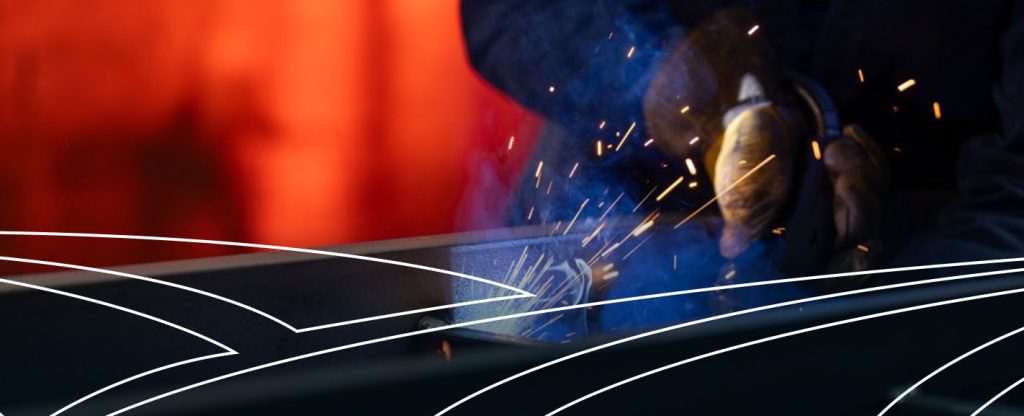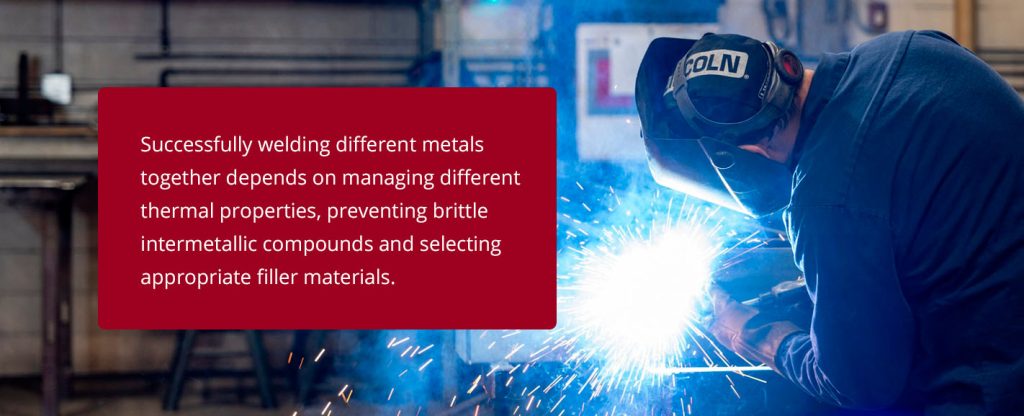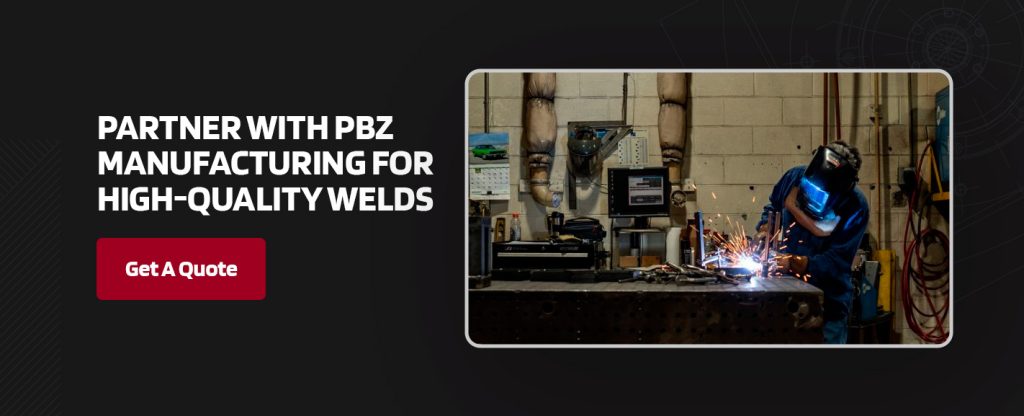

Metal welding plays a central role in modern manufacturing, construction and automotive industries. This crucial fabrication process enables the creation of everything from massive structural beams to delicate aerospace components. Understanding which metals can be welded and how they can be combined helps manufacturers optimize their processes, reduce costs and ensure products meet strict quality and safety standards.
Welding creates permanent bonds between metals by melting and fusing them, often with additional filler material. The process generates intense heat that melts the base metals, creating a molten pool that solidifies into a strong joint.
Modern welding techniques offer varying degrees of precision, speed and applicability. In addition to more advanced methods like plasma, laser and electron beam welding, some of the most common metal welding techniques include:
Ferrous metals, containing iron as their primary element, represent the backbone of industrial welding applications. Their weldability depends mainly on the chemical composition and the application and geometry of the parts.
Steel remains the most commonly welded metal, with its weldability primarily determined by carbon content and alloying elements. For example, low-carbon steels (under 0.3% carbon) weld easily and find extensive use in structural applications. Stainless steels offer excellent weldability but require proper techniques to maintain corrosion resistance.
Cast iron presents unique welding challenges due to its high carbon content and brittleness. Successful welding requires careful preheating and slow cooling to prevent cracking. Though rarely encountered in modern applications, wrought iron offers better weldability than cast iron due to its fibrous structure and lower carbon content.
Non-ferrous metals have unique properties and demand specialized welding techniques and considerations.
Aluminum welding requires cleaning oxide layers and precise heat control. TIG and WIG welding excel with aluminum, using specific shielding gases and filler materials. Different aluminum alloys exhibit varying weldability, with some aerospace grades requiring precise temperature control.
Copper’s excellent thermal conductivity makes welding challenging, often requiring high heat input and preheating. TIG welding produces the best results for thin sections, while MIG welding suits thicker materials. Pure copper welds more easily than many copper alloys.
Titanium welding demands exceptional cleanliness and complete gas shielding to prevent contamination. TIG welding dominates titanium fabrication, particularly in aerospace and medical applications. The metal’s reactive nature requires specialized procedures and equipment.
Nickel and its alloys generally exhibit good weldability, making them valuable in high-temperature applications. Most common welding processes work well with nickel, though proper cleaning and shielding remain essential.
Magnesium’s high reactivity requires careful control of welding parameters and excellent gas shielding. TIG welding produces the best results, especially for thin sections. The metal’s low melting point demands precise heat control.
Zinc-coated steels require special attention to prevent zinc vaporization and contamination of the weld. Modified procedures and proper ventilation ensure successful welding while maintaining corrosion protection.
Dissimilar metal welding expands design possibilities but requires a thorough understanding of metallurgical compatibility. Common combinations include:

Successfully welding different metals together depends on managing different thermal properties, preventing brittle intermetallic compounds and selecting appropriate filler materials. Techniques like explosion welding and friction welding enable the joining of traditionally incompatible metals. Interface layers or transition pieces sometimes bridge the gap between dissimilar metals.
The success of any welding operation depends on multiple interconnected factors. Understanding these factors helps ensure optimal weld quality, structural integrity and project success.
These significantly impact welding success. Thermal conductivity determines how heat spreads through the metal, affecting heating and cooling rates and weld quality. The metal’s melting point influences the required heat input and welding speed. The coefficient of thermal expansion affects distortion and residual stress in the finished weld. Chemical composition, including the presence of elements like sulfur and phosphorus, can affect weldability and strength.
Metallurgical factors are critical in weld integrity. The base metal’s grain size and structure influence its response to heating and cooling cycles. Phase transformations during welding can create hard or brittle zones that affect joint strength. The formation of intermetallic compounds in dissimilar metal welding requires careful control of heat input and cooling rates.
Practical considerations encompass multiple aspects of the welding process. Joint design affects weld penetration, strength and accessibility for welding equipment. Environmental considerations, such as temperature, humidity and wind, impact shielding gas effectiveness and cooling rates. Post-weld treatments, including heat treatment, stress relief and surface finishing requirements, influence the welding procedure and final product quality.
PBZ Manufacturing brings decades of metal fabrication expertise dating back to 1947. Our knowledge comes from completing thousands of diverse welding projects across multiple industries, including construction, manufacturing and automotive. Our AWS-certified welders continuously expand their knowledge through practical experience and continuous technical education, keeping us at the forefront of welding technology and best practices.
Our team operates state-of-the-art welding stations and specializes in precision techniques for intricate work and high-volume production welding. We maintain extensive welding capabilities, from technical TIG welding for superior weld quality to advanced robotic welding techniques. Our certified expertise, modern welding equipment and decades of experience provide us with practical insights about metal weldability and welding techniques.

PBZ Manufacturing offers comprehensive welding services, from engineering consultation through final assembly. Our approach ensures optimal results for your welding projects, whether they involve standard steel fabrication or complex dissimilar metal joining.
Our certified team excels in MIG, TIG and robotic welding, supported by advanced capabilities in structural 3D laser cutting, CNC machining and powder coating. As your one-stop manufacturing partner, we streamline production and reduce costs while maintaining superior quality.
Contact us today for a free quote and discover how our welding expertise can enhance your manufacturing efficiency.
Manufacturing is in our DNA. Since Paul B. Zimmerman opened his small welding and repair shop in 1947, we've remained true to our roots: metal manufacturers serving in the Spirit of Christ. We're committed to carrying forward the service and business principles that brought us here. We're also passionate about advancements in technology and continuous improvements to meet your needs. It's why we have expanded our manufacturing and assembly capacity and added new flat and structural lasers.
Our new logo honors this legacy while signaling an exciting future of advanced capabilities and expanded capacity. We're committed to giving your ideas shape. What can we make for you?